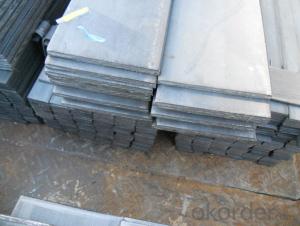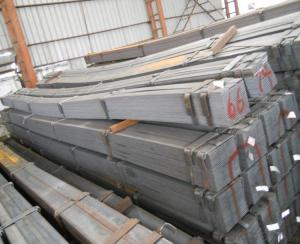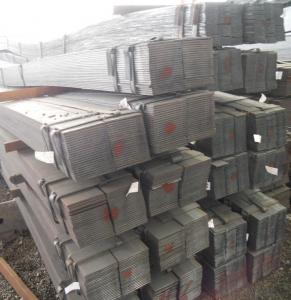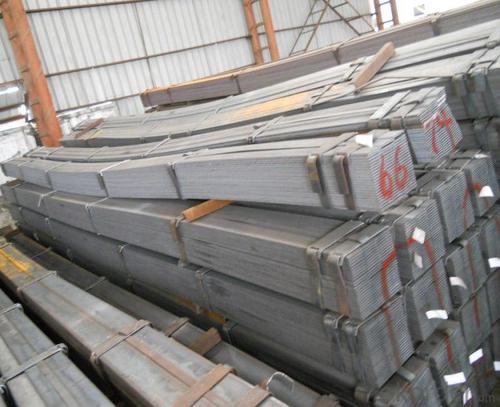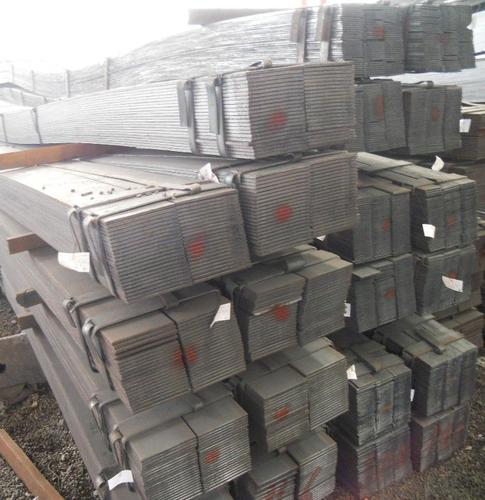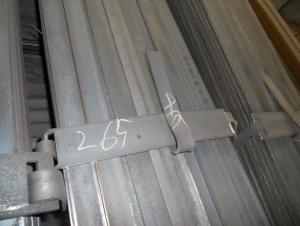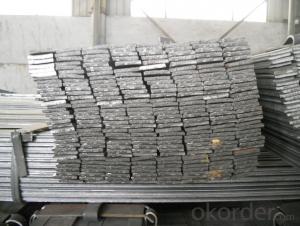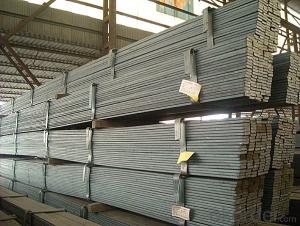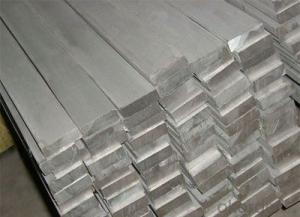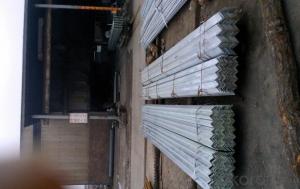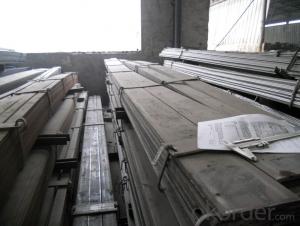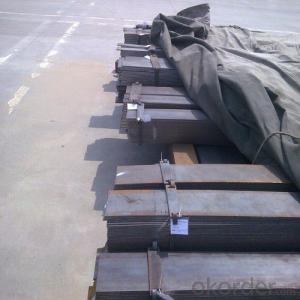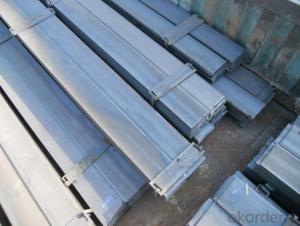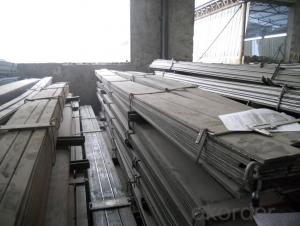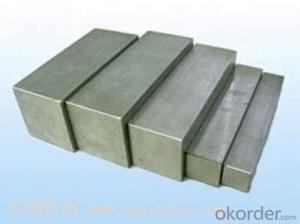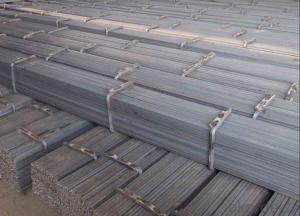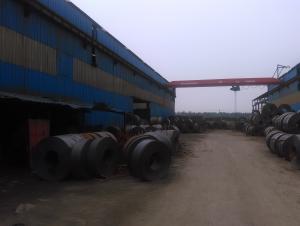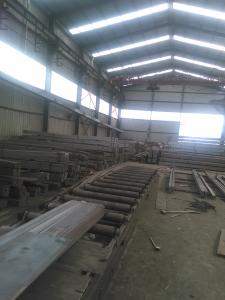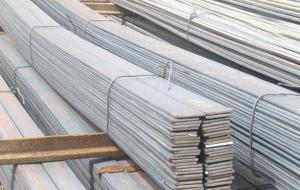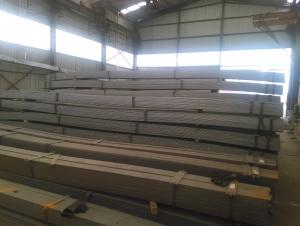High Quality Mild Steel Flat Bar in Grade Q235
- Loading Port:
- Tianjin
- Payment Terms:
- TT OR LC
- Min Order Qty:
- 25 m.t.
- Supply Capability:
- 100000 m.t./month
OKorder Service Pledge
OKorder Financial Service
You Might Also Like
Specification of Steel Flat Bar
Commodity: Carbon Steel Flat Bar
Standard: GB,JIS,ASTM,
Material: Q235,SS400 or Equivalent
Brand name: FLATSPACE
Origin place: China
Thickness: 3mm-30mm
Width:20mm-200mm
Length: Max 12m
Certification: SGS/BV
Chemical composition of Q235
Alloy No | Grade | Element(%) | ||||
C
| Mn
| S
| P
| Si
| ||
Q235
|
B
|
0.12—0.20 |
0.3—0.7 |
≤0.045 |
≤0.045
|
≤0.3
|
Physical properties of Q235
Alloy No | Grade | Yielding strength point(Mpa) | Tensile strength (Mpa) | Elongation after fracture(%) | ||||||
Thickness (mm) | Thickness (mm) | |||||||||
≤16 | >16--40 | >40--60 | >60--100 | ≤16 | >16--40 | >40--60 | >60--100 | |||
≥ | ≥ | |||||||||
Q235 |
B |
235 |
225 |
215 |
205 |
375--500 |
26 |
25 |
24 |
23 |
Above sheets show the technical data of Q235,we can also provide other materials similar to Q235.
Usage/Applications of Steel Flat Bar
Widely used for construction;
Machinery manufacturing;
Iron tower steel structure;
Shipbuilding; Steel grating;
Staircase;
Bridge;
Viaduct;
Railway spare parts;
Boilers making etc.
Packaging & Delivery of Steel Flat Bar
Packaging Details: The Steel Flat Bars are packed in bundles and loaded in 20 feet/40 feet container, or shipped by bulk cargo ,also we can do as customer's requirements.
Delivery Details:30~45 days upon the receipt of buyer payment by T.T. or L/C.
- Q: Are steel flat bars available in pre-cut lengths?
- Yes, steel flat bars are available in pre-cut lengths. Many suppliers offer steel flat bars in various pre-cut lengths to cater to different customer needs and projects. These pre-cut lengths are typically standardized and range from a few feet to several feet long. However, the availability of specific pre-cut lengths may vary depending on the supplier and the type of steel flat bar required. It is always recommended to check with the supplier or manufacturer to inquire about their specific pre-cut length options.
- Q: What is the typical width-to-thickness ratio for steel flat bars?
- The typical width-to-thickness ratio for steel flat bars can vary depending on the specific application and requirements. However, a commonly used ratio is around 12:1. This means that the width of the flat bar is approximately 12 times its thickness. This ratio provides a balance between structural stability and ease of fabrication, allowing the flat bar to withstand bending and twisting forces while still maintaining its shape and integrity. It is important to note that the actual ratio may differ based on the specific industry standards, engineering specifications, and intended use of the steel flat bar.
- Q: How can copper cables and flat steel be welded together?
- The copper cable is pressed into the nose. It is punched through the steel and screwed,The national standard atlas is connected with a total equipotential terminal box.
- Q: Can steel flat bars be used in the manufacturing of machinery?
- Yes, steel flat bars can be used in the manufacturing of machinery. Steel flat bars are versatile and commonly used in various industries, including machinery manufacturing. They offer several advantages such as high strength, durability, and resistance to corrosion, which make them suitable for machinery applications. Steel flat bars can be used for structural components, supports, brackets, and other critical parts in machinery. They provide stability and rigidity to the machinery, ensuring proper functioning and longevity. Additionally, steel flat bars can be easily machined, welded, and formed into desired shapes, making them ideal for customization in machinery manufacturing.
- Q: Do steel flat bars have rounded edges or sharp edges?
- Steel flat bars typically have sharp edges.
- Q: What are the different sizes of steel flat bars?
- Steel flat bars come in a variety of sizes to suit different applications and requirements. Common sizes of steel flat bars include 1/8 inch thick by 1/2 inch wide, 1/4 inch thick by 1/2 inch wide, 3/8 inch thick by 1/2 inch wide, and 1/2 inch thick by 1/2 inch wide. However, these are just a few examples, as steel flat bars can be found in a wide range of thicknesses and widths. Some larger sizes may include 1 inch thick by 4 inches wide or even larger. The specific size of a steel flat bar needed will depend on the intended use, load-bearing capacity, and the desired strength of the steel. It is important to consult a steel supplier or reference an industry standard to determine the appropriate size for a specific application.
- Q: How do steel flat bars compare to granite flat bars?
- Steel flat bars and granite flat bars have distinct differences in terms of material composition, properties, and applications. Steel flat bars, made from alloyed iron and carbon, offer high strength, durability, and versatility. They are commonly used in construction projects, industrial applications, and manufacturing due to their excellent load-bearing capacity and resistance to corrosion. Steel flat bars can be easily welded, machined, and shaped, making them suitable for a wide range of structural and decorative purposes. On the other hand, granite flat bars are composed of natural stone, formed from the cooling and solidification of magma. Granite flat bars are known for their aesthetic appeal, durability, and natural beauty. They are predominantly used in architectural and interior design applications, such as countertops, flooring, and decorative elements. Granite flat bars offer a unique and timeless look, with variations in color, pattern, and texture, making them a popular choice for enhancing the visual appeal of residential and commercial spaces. In summary, while steel flat bars are favored for their strength and versatility in structural applications, granite flat bars are valued for their aesthetic appeal and durability in architectural and design projects. The choice between the two depends on the specific requirements and desired outcome of the project at hand.
- Q: What is the maximum load that steel flat bars can support?
- The maximum load that steel flat bars can support depends on various factors such as the dimensions of the bar, the type and grade of steel used, and the method of support. Therefore, it is difficult to provide a specific answer without more details.
- Q: How to connect the base of the tower crane and the flat steel? How can it be welded and connected?
- And the tower back to the set screw connection, generally need a group, that is, tower crane foundation diagonal two lines, two ground connection! The distance should be more than six meters.
- Q: What are the different methods of surface etching for steel flat bars?
- There are several methods of surface etching for steel flat bars, each with its own advantages and applications. Here are some of the different methods commonly used: 1. Chemical Etching: This method involves using chemical solutions or acids to selectively remove the surface layer of the steel. The choice of solution and the etching time can be adjusted to achieve the desired depth and pattern. Chemical etching is versatile and can produce intricate designs, logos, or text on the surface of the flat bar. 2. Electrochemical Etching: Also known as electrolytic etching, this method utilizes an electric current to dissolve the surface layer of the steel. The flat bar is immersed in an electrolyte solution, and a stencil or mask is placed on the surface to guide the etching process. Electrochemical etching is often used for creating permanent markings, such as part numbers or identification codes, on steel flat bars. 3. Laser Etching: Laser etching is a non-contact method that uses a high-powered laser to remove the surface layer of the steel. It provides precise control over the etching process and can achieve high-resolution patterns or designs on the flat bar. Laser etching is commonly used in industries where precision and permanence are crucial, such as aerospace or medical equipment manufacturing. 4. Sandblasting: This method involves propelling abrasive particles, such as sand or grit, at high speed onto the steel flat bar's surface. The impact of the particles removes the top layer of the steel, creating a textured or roughened surface. Sandblasting is often used to improve the adhesion of coatings or paints on the flat bar, or to create a decorative or non-slip surface finish. 5. Mechanical Etching: Mechanical etching involves physically removing the surface layer of the steel using mechanical means, such as milling, grinding, or polishing. It can be used to achieve a specific surface finish or texture, such as a brushed or satin finish. Mechanical etching is often employed to enhance the aesthetic appeal of steel flat bars in architectural or interior design applications. Each of these methods offers unique benefits and can be chosen based on the specific requirements of the steel flat bar's application. It is important to consider factors such as cost, precision, speed, and the desired outcome when selecting the appropriate surface etching method.
Send your message to us
High Quality Mild Steel Flat Bar in Grade Q235
- Loading Port:
- Tianjin
- Payment Terms:
- TT OR LC
- Min Order Qty:
- 25 m.t.
- Supply Capability:
- 100000 m.t./month
OKorder Service Pledge
OKorder Financial Service
Similar products
Hot products
Hot Searches
Related keywords
